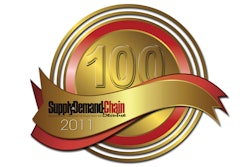
Over the last two decades, the ERP market has grown from strength to strength, and the ERP system has almost become an integral part of any enterprise worth its salt. Analyst reports suggest that the ERP market is currently about $40 billion in total revenue, consistently ranks among the top IT spending priority for enterprises, and is expected to grow to over $50 billion by 2013.
ERP deployments with Oracle, SAP and Microsoft, as well as others, are not seen as mere IT initiatives; they are now considered as strategic levers to leapfrog ahead of the competition by enabling integration, standardization and improvement of business operations across the enterprise, which in turn can positively impact the company's financial and operational metrics.
Yet many analysts and survey data indicate that a rising number of ERP deployments are failing to achieve their stated objectives. According to the Project Management Institute (PMI), nearly 70 percent of all ERP deployments projects fail, are late or go over-budget. Panorama Consulting, in its "2010 ERP Report," found that 57 percent of such projects take longer than planned; 54 percent go over-budget; and 41 percent fail to realize at least half the expected business benefits.
Any ERP deployment failure hurts the enterprise deeply as these are long-gestation, high-TCO (total cost of ownership) initiatives that impact multiple stakeholders. Thus, the biggest challenge for executives heading up an ERP project is to determine how to keep the deployment simple and aligned to its stated goals and objectives.
Challenges in ERP Deployments
Enterprise resource planning system deployments are large in scope and complex by their nature compared to any other IT program. They have budgets in the millions of dollars and typically impact nearly the entire user community. Inevitably, they touch the core business of the enterprise and typically trigger process- and operation-level changes across business divisions.
ERP applications also end up having myriad integrations with satellite applications, data warehouses and external systems, resulting in complex technology architectures and dependencies. They become further complicated by the fact that they often stretch over a long period of time. These complexities pose many new challenges and also put a strain on the enterprise's overall budget and day-to-day business and IT operations.
These various challenges can be classified across the three broad dimensions, which lead to ERP deployment complexities: Organization/Business, Technology/Product and Deployment Type/Scope.
Best Practices for Successful ERP Deployments
Carrying out any ERP initiative successfully requires striking a balance among the above-mentioned dimensions. These dimensions, comprising strategic as well as tactical approaches, are not independent of each other; rather, they influence each other in almost every phase of the deployment. Some of the key success factors and best practices for ERP deployments are cited below.
Business/Organization Considerations
Thorough and Continued Business Ownership and Stakeholder Management — ERP deployments need to be owned and sponsored by senior business leadership, and key business users as well as managers must be galvanized around the entire ERP effort. Involvement of key business users from all relevant process areas at all stages of the program — and not limited to requirements-gathering and acceptance-testing phases — ensures that change is managed at all levels and percolated in the enterprise functions through the right channels and sources. The changes to business processes and operations should be clearly documented and explained to the entire impacted business community in a timely manner.
Upfront Definition of ERP Success Criteria — No success can be claimed unless it's measurable and evident, and this holds true for ERP deployments as well. It's highly recommended that while developing the business case for the ERP program, enterprises must clearly document the ERP success criteria, the process by which those criteria are to be measured, and the applicable metrics. These criteria should be a combination of business metrics, IT and employee metrics, and they also should not be entirely internal-centric, that is, they should also bake in customer and supplier satisfaction. This helps the deployment team to remain focused during ERP execution and to work towards these factors and claim victory based on facts.
Comprehensive End User Training and Ensuring Continued Use — ERP applications are typically pretty sophisticated and can overwhelm the business users to the point of inspiring a phobia. Thus user training has to be contextualized and comprehensive for each and every user group to increase their system adoption and continued use. Training sessions should be planned and executed with user input at all the times. And training must be repeated and should include hands-on testing as well for the learning to really sink in.
Avoid ERP Deployment in Parallel to Enterprise Major Re-org or Business Event — Even though any ERP deployment can be managed in parallel to a enterprise major re-org through appropriate organizational change management, doing so increases the risks associated with the deployment multifold due to the uncertain business environment and the availability of key users and managers.
Technology/Product Considerations
Diligent Selection of the ERP Product and Systems Integrator (SI) — Enough due diligence must be done while selecting the ERP product and the ERP SI, even it if means a delay in launching the ERP deployment in the first place. Short-term goals as well as long-term objectives must be kept in mind while selecting the ERP product. And sufficient time must be spent with the SI in the ERP proof of concept and selection phase before awarding the contract to the SI.
Proof of Concept (POC)-driven, Robust Enterprise IT Architecture — ERP deployments typically lend themselves to highly sophisticated IT architecture and middleware. Due to the widespread use of ERP and comparison with legacy applications, system performance also becomes the key for user satisfaction. Thus the ERP IT team must do a detailed POC before finalizing the IT architecture so that it can scale up as time passes and the data volumes grow. Non-functional requirements (NFRs) should also be kept in mind while drawing up the IT architecture.
Minimizing Customization of ERP Out-of-the-box Functionalities — The true advantages of using a commercial off-the-shelf (COTS), packaged application like an ERP system will accrue only if the enterprise keeps any customizations to a minimum and leverages the embedded out-of-the-box functionalities provided by the ERP, else why even go for ERP rather than looking to a in-house, custom-made application. Customizing an ERP application introduces instability into the application — something that even the ERP product vendor will not own up to. ERP applications require frequent patching and regular upgrades as well, a process that can become more complex when customizations have been made to the system. Finally, the greater the customization, the greater the testing and support effort, and hence the higher the TCO.
Reporting Cannot Be a Second Thought or an After-deployment Phenomenon — Even the best ERP system deployment will be considered a failure if the system does not provide all the necessary reports to business users. Always plan ahead for how critical reports are to be delivered to business users on Day One of the ERP system go-live.
Deployment Type/Scope Considerations
Manage Risk and Cost Using the Appropriate ERP Deployment Approach — Any ERP deployment timelines, budget, risk and comprehensiveness are dictated by the type and nature of the implementation approach selected. Before initiating any ERP program, the enterprise has to choose among various critical options for how to approach the implementation: "big-bang" versus "region-based phased rollouts," geographies to be grouped together, "single instance" versus "hub-and-spoke" instance model, "full-cycle implementation" versus "solution rollouts," and so on. The company must evaluate these options in the context of its scale of business revenue, number of users and their demographics, in-scope geographies and languages, allocated budgets and desired timelines for planned ERP deployment, and then select the most appropriate option. Be honest and reach out to all possible levels during the selection process to understand the enterprise's risk appetite.
Adequate Due Diligence while ERP Program Scoping, Sizing and Resource Planning — Before taking the final plunge and getting into the nuts and bolts of an ERP deployment, the ERP team should do careful and detailed phase-by-phase project and resource planning for all the groups from the organization, system integrators and B2B trading partners that will be affected or involved in the project. Various dimensions of the scope of work should be detailed out, such as geographical coverage, process coverage, user base, lines of business, etc. The deployment methodology should have clearly defined entry and exit criteria for each phase of execution.
Well Thought-out and Well-rehearsed Mock Conversions and Cutover Planning — There is no better recipe for success than continued practice. Rich data quality and complete data conversion, minimum business downtime and smooth transition to a new ERP system are the hallmarks of successful ERP execution. Thus the ERP deployment project managers need to plan for multiple mock runs for data conversions and cutover, with the minutest of activities and dependencies documented and rehearsed.
Conclusion
Today, enterprises rely on ERP applications to remain competitive and thrive in the global economy. The success of any ERP deployment primarily comes down to three criteria: system adoption and continued use by end users, within-budget capital expenses, and overall business value delivered. However, the majority of ERP deployments rarely meet user expectations, frequently run over budget, and often don't meet the stated business benefit metrics. Every ERP deployment is different, and the challenges and implementation of these best practices will vary from situation to situation. However, as long as the essence of these practices is kept in mind, the chances of success are likely to increase.
http://www.addthis.com/bookmark.php?v=250&username=sdcexec">http://s7.addthis.com/static/btn/v2/lg-share-en.gif" width="125" height="16" alt="Bookmark and Share" style="border:0"/>
More Articles of Interest
- http://www.sdcexec.com/print/Supply-and-Demand-Chain-Executive/Supply-Chain-Collaboration-20/1$10891">The Next Level of Technology-enabled Supply Chain Collaboration — Telepresence is set to change the way global supply chains connect
- http://www.sdcexec.com/print/Supply-and-Demand-Chain-Executive/Supply-Chain-Collaboration-20/1$10891">Supply Chain Collaboration 2.0 — Using Web 2.0 technologies to build a knowledge-sharing platform across the enterprise — and across the supply chain












